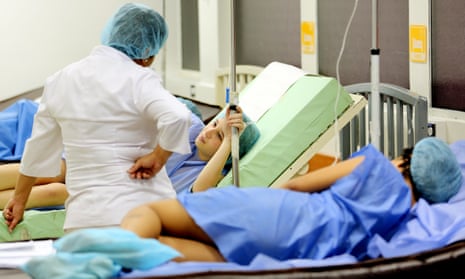Pregnancy complications are the leading cause of death globally among females aged 15-19, with self-harm in second place, a global study has found.
More than 1.2 million female and male adolescents die annually, the World Health Organization (WHO) report said – the majority from preventable causes including mental health issues, poor nutrition, reproductive health problems and violence.
The authors said that failing to tackle the health of 10- to 19-year-olds could undermine the improvements achieved in maternal and child health worldwide, pointing out that too often adolescent health was overlooked.
“By investing in adolescent health, you actually get a triple benefit because you get a healthier adolescent now, that healthier adolescent becomes a healthier, more productive adult in the near future, and also for those who have children, they become a more healthy parent,” said David Ross, lead author of the study. “If you have a healthy parent, that spills over into a healthy child.”
The WHO surveyed the causes of death for 10- to 19-year-olds in 2015. It found that the leading cause, globally, was road injuries, which caused 115,300 such deaths.
The next biggest killers were:
- Lower respiratory infections such as pneumonia.
- Self-harm.
- Diarrhoeal diseases.
- Drowning.
There were considerable differences when the results were compartmentalised by sex and age.For girls aged 10-14, the leading cause of death was lower respiratory infections, but the biggest problems for those aged 15-19 were maternal conditions including haemorrhage, complications from unsafe abortion and obstructed labour. These occurrences led to 10.1 deaths for every 100,000 individuals.
For boys in both age groups, the leading cause of death was injury from road accidents, with drowning the second leading cause for the younger age group and violence in second place for boys aged 15-19.
For both male and female adolescents, self-harm was in the top five causes of death, resulting overall in 5.6 adolescent deaths per 100,000 individuals.
“Many people think there is not much that you can do about suicide and self-harm. [They are] wrong,” said Ross.
The authors noted that 45% of adolescent deaths occurred in low- and middle-income countries in Africa and 26% in similar countries in south-east Asia.
The leading causes of death among 10- to 19-year-olds varied around the world, with congenital anomalies and leukaemia in the top five for high-income countries.
As well as flagging the leading causes of death and ill-health among 10- to 19-year-olds, the authors set out a panoply of possible interventions aimed at policymakers, educators and researchers, among others.
“Adolescents have particular health needs related to their rapid physical, sexual, social and emotional development and to the specific roles that they play in societies,” the authors wrote. “Treating them as old children or young adults does not work.”
The authors flagged the need for adolescents to be involved in shaping public policy, as well as highlighting the need for adolescent-friendly sexual and reproductive health services and programmes to help adolescents control their behaviour to reduce violence.
Other suggested interventions were more specific.
“The fifth biggest cause of death among adolescents is drowning, again mainly adolescent boys,” said Ross. “Why are we not putting big efforts into teaching kids how to swim, especially in countries where there is a lot of water around?”
Ross added that when it came to road injuries, a slew of different strategies needed to be considered, from the installation of bridges and traffic calming near schools to the use of graduated driver licensing, mandatory seatbelts and lower blood-alcohol limits for adolescents.
“[For] most of the road traffic injuries that cause death globally in adolescents, the adolescent is a passive victim – [they are] not the driver: they are a passenger or a road pedestrian,” said Ross.
While Ross stressed that adolescent girls faced particular problems, including pregnancy-related issues, he added that overall, adolescent boys were dying or affected by disease or disability at a higher rate.
“As well as building on and strengthening the sexual and reproductive health and HIV programmes, we have to take in [to account] these other major causes,” he said.
Aoife Doyle, assistant professor of epidemiology at the London School of Hygiene & Tropical Medicine, welcomed the report. “Adolescent health was neglected for so long, with research/programming focused primarily on reducing HIV and pregnancies among adolescent girls,” she said.
“This publication highlights the importance of a more comprehensive approach to adolescent health, for example, by including a focus on young men, and recognising that education, employment opportunities, and family and social support can have an important influence on the health and wellbeing of a young person.”
